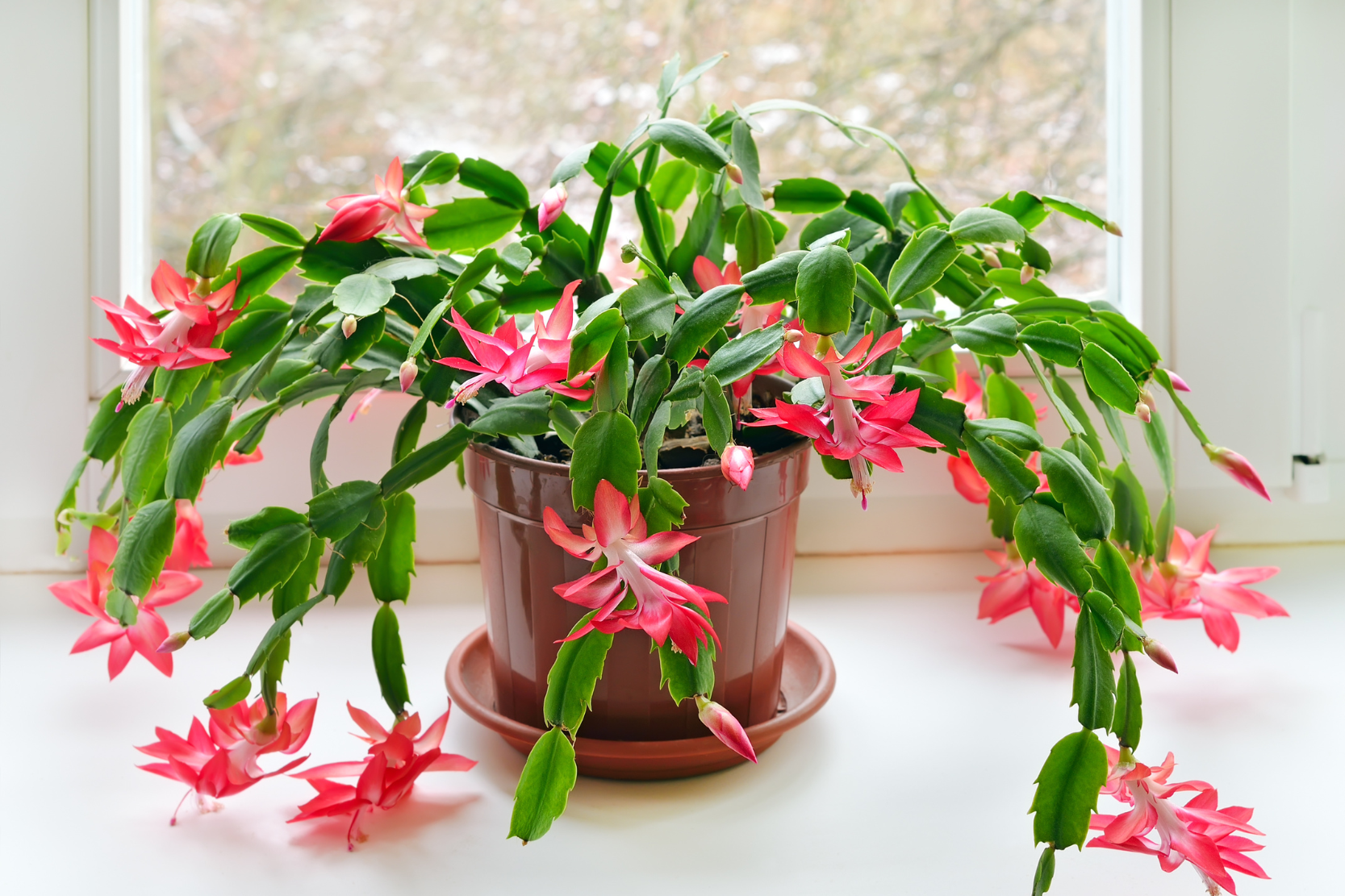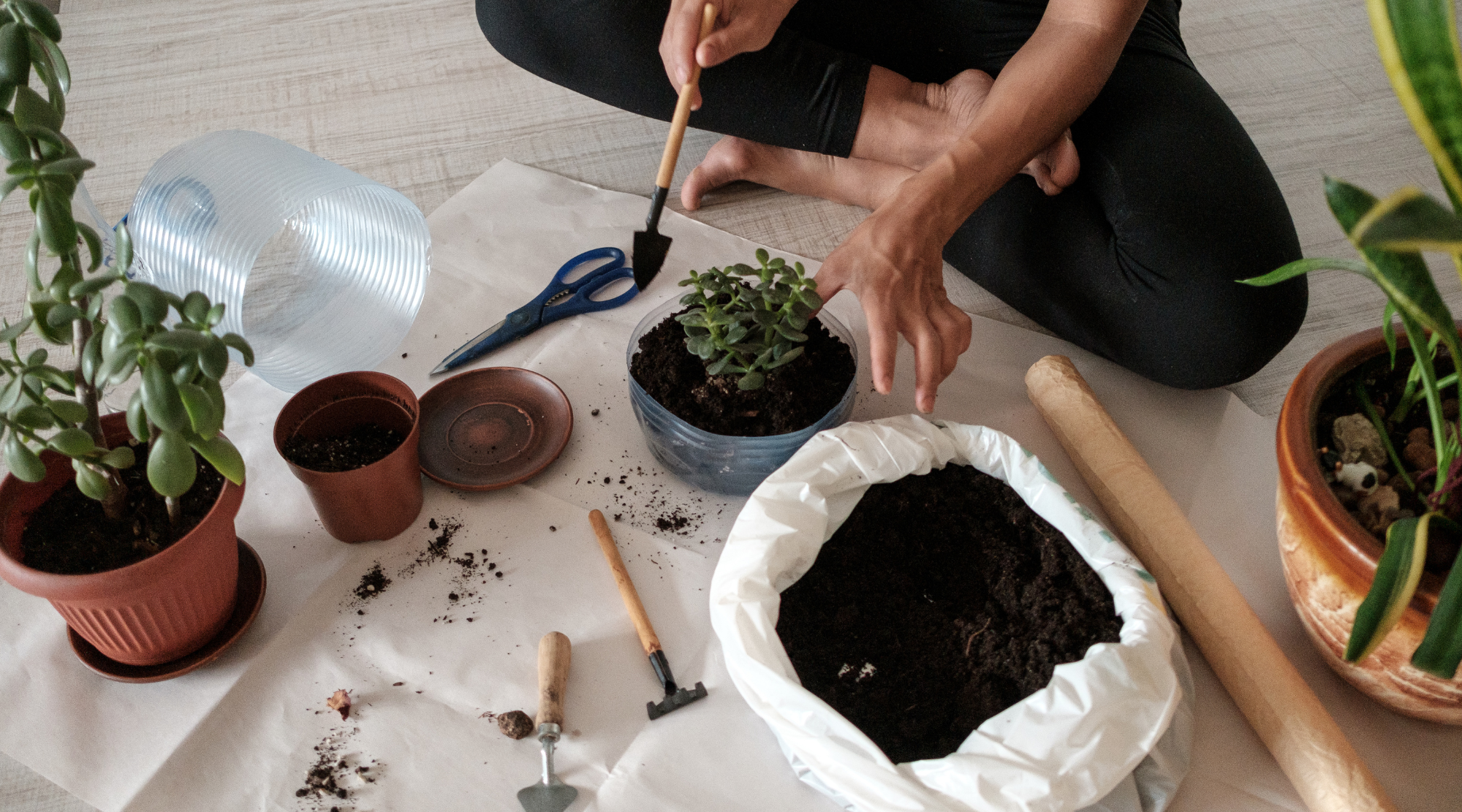The Thanksgiving Cactus (Schlumbergera truncata) is a vibrant holiday favorite, known for its stunning flowers that bloom just in time for Thanksgiving. Its unique toothy-edged leaves and colorful blooms make it a standout in any indoor plant collection. If you’re looking for a resilient, easy-to-care-for houseplant that rewards you with festive blossoms, the Thanksgiving Cactus is the perfect choice. With the right care, you can enjoy its beautiful blooms year after year.
How to Identify a Thanksgiving Cactus
The Thanksgiving Cactus is often confused with its holiday cousins, the Christmas Cactus and the Easter Cactus, but it has a few distinctive traits. Knowing how to identify this plant is the first step to ensuring proper care.
Leaf Shape
The Thanksgiving Cactus has unique, serrated leaf edges that resemble sharp, pointed claws. This is a key identifier that sets it apart from the Christmas Cactus, which has smoother, rounded edges.
Bloom Time
As the name suggests, the Thanksgiving Cactus typically blooms around late fall, from November to early December. Its bright flowers come in colors like pink, red, orange, and white, providing a beautiful display during the cooler months.
Growth Habit
Thanksgiving Cacti grow upright with segmented stems and can reach about 6 to 12 inches tall and 1 to 2 feet wide. Despite its compact size, it can live for decades with proper care, often blooming each year during the holiday season.
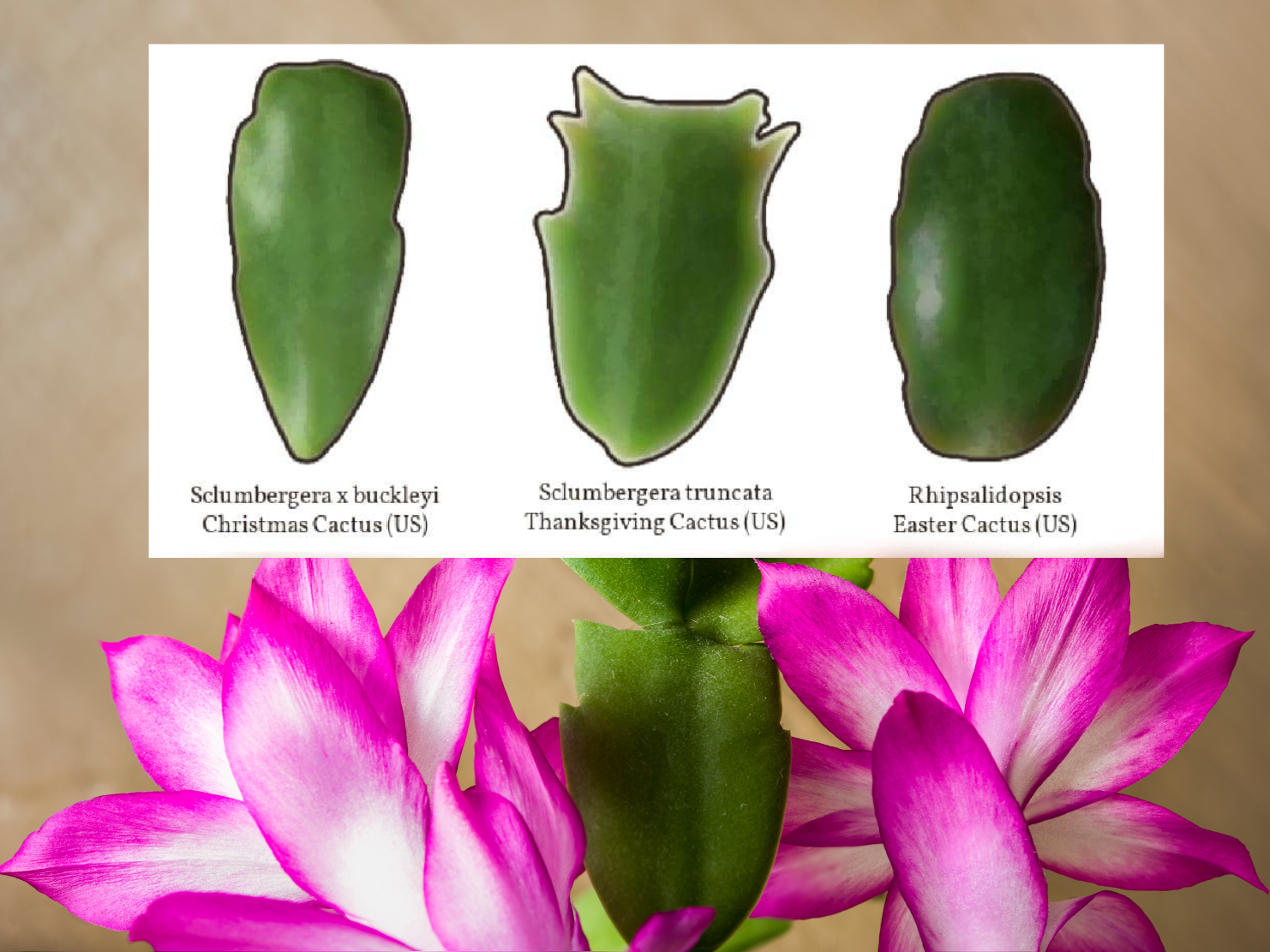
Light Requirements for Thanksgiving Cactus
Getting the light conditions right for your Thanksgiving Cactus is crucial for both its health and blooming success. This plant thrives in bright, indirect light, which mimics the filtered sunlight it would naturally receive in its native tropical forests.
Spring and Summer
During its active growing season, the Thanksgiving Cactus does well in medium indirect light. A north-facing window or a spot that receives indirect sunlight is perfect.
Fall and Winter
As blooming season approaches, the cactus prefers brighter, indirect light. Move your plant to a slightly sunnier location, such as an east-facing window, but avoid direct sunlight, which can scorch the leaves.
Tip for Blooming
Exposing the Thanksgiving Cactus to brighter light in the weeks leading up to Thanksgiving can encourage more robust flowering. However, be sure to shield it from harsh midday sun by using sheer curtains or placing it in a well-lit but indirect spot.
For more information on the optimal growing conditions for holiday cacti, check out the Royal Horticultural Society’s comprehensive guide.
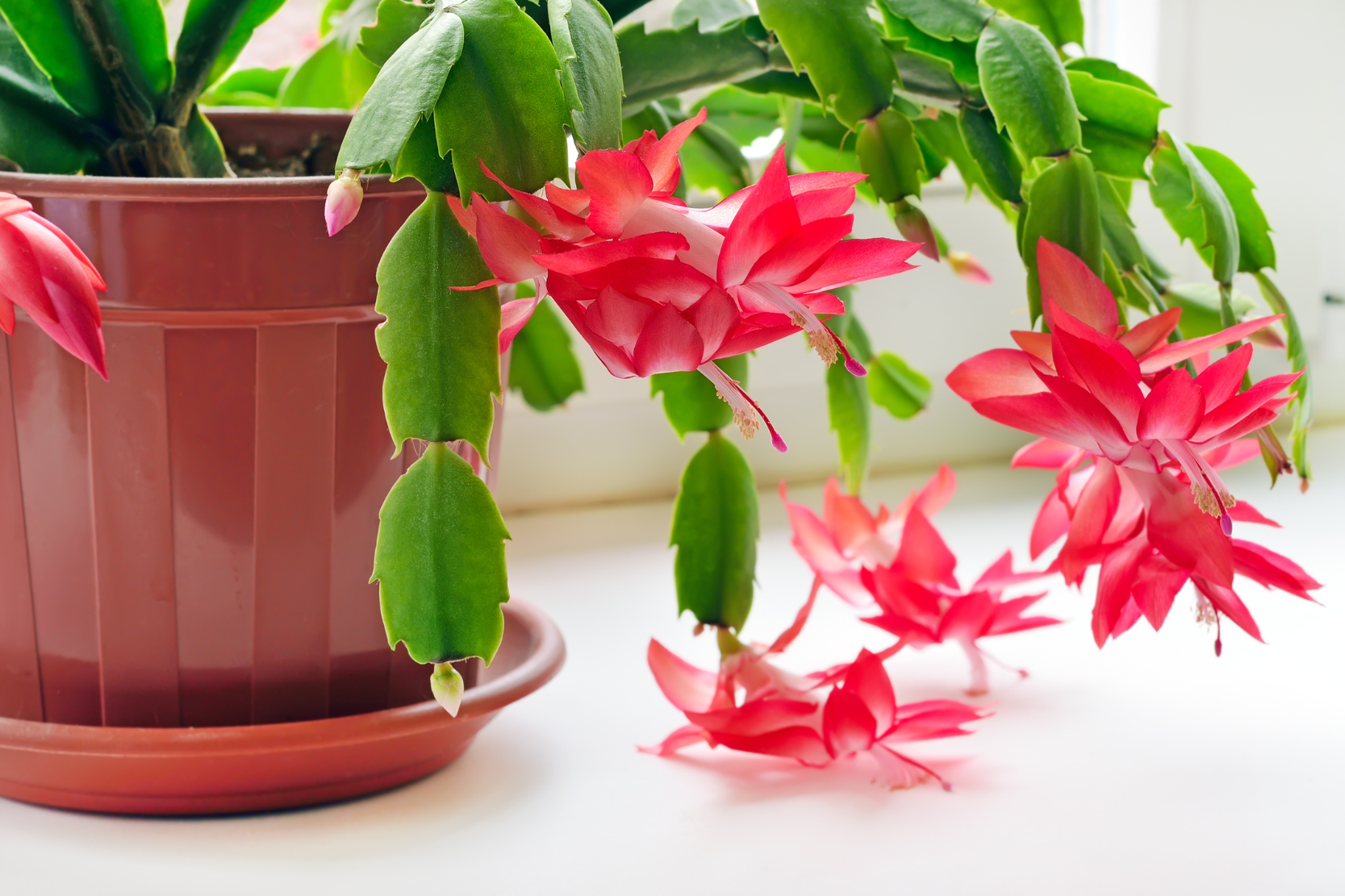
The Best Soil for Thanksgiving Cactus
Unlike desert cacti, the Thanksgiving Cactus is a tropical plant that grows naturally in the crevices of trees, where its roots receive plenty of air and water drainage. Replicating these conditions in your home is essential for healthy growth.
Soil Mix
The Thanksgiving Cactus thrives in well-draining, humus-rich soil. A mixture of one part peat moss, one part perlite, and one part orchid bark works perfectly. This combination creates a light, airy soil structure that mimics its natural habitat and prevents root rot.
Drainage
Good drainage is key to preventing overwatering issues. Always use pots with drainage holes, and ensure the soil dries slightly between waterings.
PH Level
Thanksgiving Cacti prefer slightly acidic soil (pH 5.5 to 6.2). Using peat moss in your soil mix helps maintain this acidity, providing an ideal environment for the plant’s roots.
If you’re just starting with indoor gardening, be sure to check out our comprehensive guide on indoor planting to ensure your plants thrive year-round.
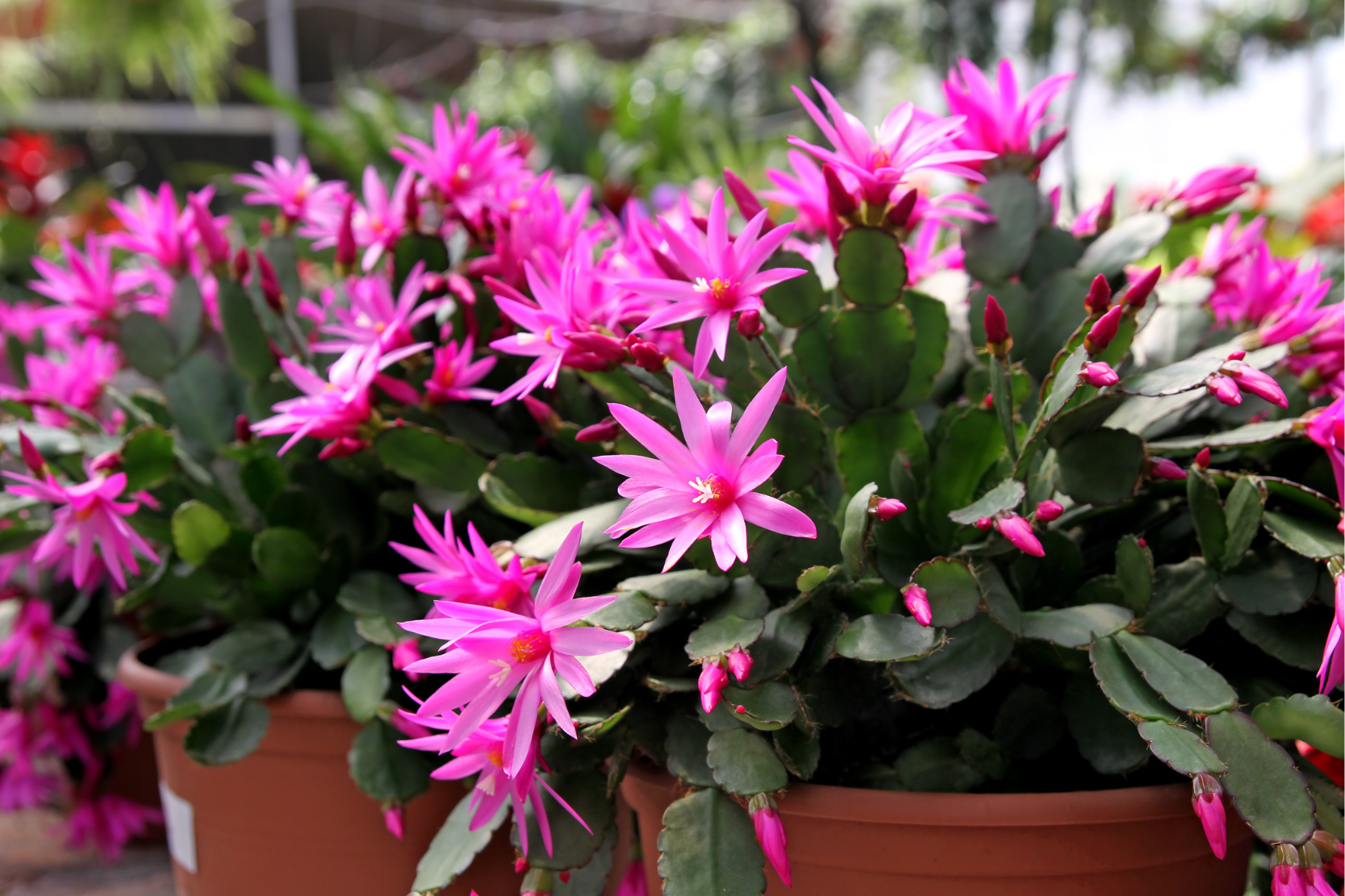
Watering Schedule for Thanksgiving Cactus
Proper watering is essential for the health of your Thanksgiving Cactus, and getting it right will ensure the plant thrives without suffering from common issues like root rot or dehydration. This tropical cactus prefers a balance—neither too wet nor too dry.
How Often to Water
The Thanksgiving Cactus likes consistently moist soil, but it should never be waterlogged. Water the plant thoroughly when the top 1-2 inches of soil are dry to the touch, allowing excess water to drain out of the bottom of the pot. Avoid letting the plant sit in standing water, as this can lead to root rot.
- Active Growing Season (Spring and Summer): Water more frequently, keeping the soil moist but allowing the top layer to dry slightly between waterings.
- Dormancy Period (Fall and Winter): Water less frequently during the dormancy period (after blooming), reducing the watering schedule to prevent overwatering when the plant’s growth slows down.
Seasonal Watering Adjustments
During the spring and summer, the Thanksgiving Cactus is in its active growing phase and will require more water to support new growth. However, as it transitions into the fall and winter, when blooming occurs, you should adjust your watering routine:
- Before Blooming: In the weeks leading up to Thanksgiving, keep the soil slightly more moist to encourage blooming.
- Post-Blooming: Once the flowers drop, allow the plant to dry out a bit more between waterings. This gives the cactus a resting period until the next growing season.
Signs of Overwatering and Underwatering
Getting the watering balance right can be tricky, but here are a few signs to watch for:
- Overwatering: Yellow, mushy leaves or a soggy feeling at the base of the plant. If overwatering occurs, allow the soil to dry out and adjust your watering frequency.
- Underwatering: Shriveled or dry leaves. If this happens, increase your watering, but ensure you do not overcorrect by soaking the soil too heavily.
Looking for more low-maintenance houseplants? Explore our list of easy houseplants that even beginners can grow successfully.
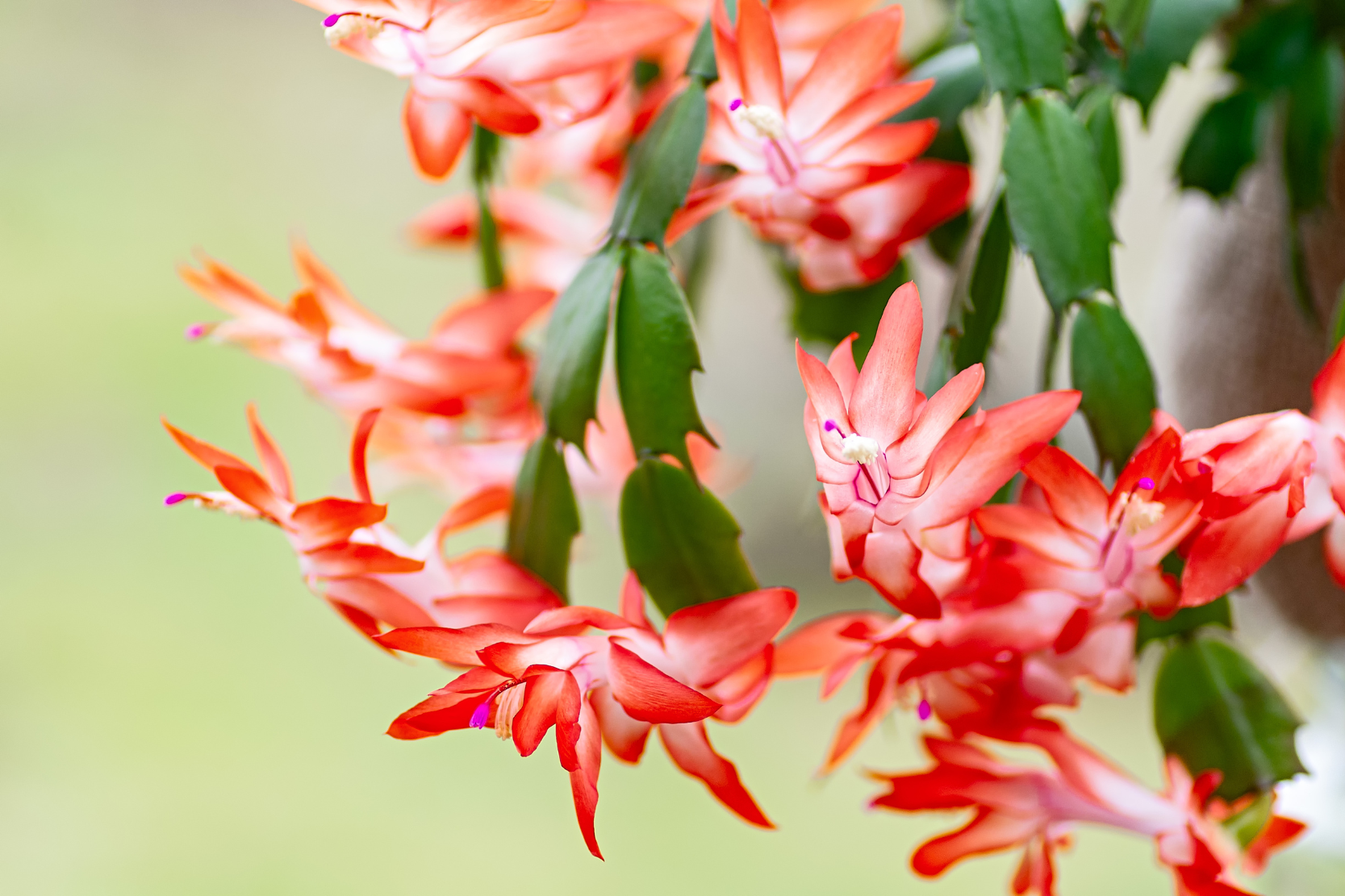
Temperature and Humidity Needs
The Thanksgiving Cactus, being a tropical plant, thrives in warm and humid conditions. Creating the right environment at home will help it grow healthy and produce beautiful blooms during the fall season.
Ideal Temperature Range
Thanksgiving Cacti prefer temperatures between 60 to 65°F (15 to 20°C). These cacti do well in typical household temperatures, but they are sensitive to drastic changes, so avoid placing them near drafts, heating vents, or cold windows. Extreme cold can damage the plant, while excessive heat can dry it out.
- Tip for Encouraging Blooms: In early fall, cooler temperatures (around 50-55°F) can help trigger the blooming process. You can place the cactus in a cooler room or move it outdoors for short periods if the temperature is mild. However, bring it back indoors if the temperature drops below 40°F.
Humidity Levels
Thanksgiving Cacti are tropical and enjoy high humidity levels, preferably above 50%. While average household humidity can suffice, boosting humidity levels can significantly improve the plant’s overall health.
- Increase Humidity: Use a humidifier, place a water-filled pebble tray underneath the pot, or group your plants together to create a more humid environment.
- Misting: Lightly misting the cactus occasionally can also help mimic the humidity of its natural habitat, but be sure to avoid overdoing it as it can lead to fungal issues.
Avoiding Temperature and Humidity Stress
Sudden temperature changes and low humidity levels can cause stress to the Thanksgiving Cactus, resulting in leaf drop or reduced blooming. To avoid this:
- Keep it away from drafts: Ensure the cactus is placed in a stable environment where it won’t be exposed to cold drafts or sudden heat.
- Monitor humidity: If your home is particularly dry, especially during winter months, consider boosting the humidity around the plant to prevent drying out.
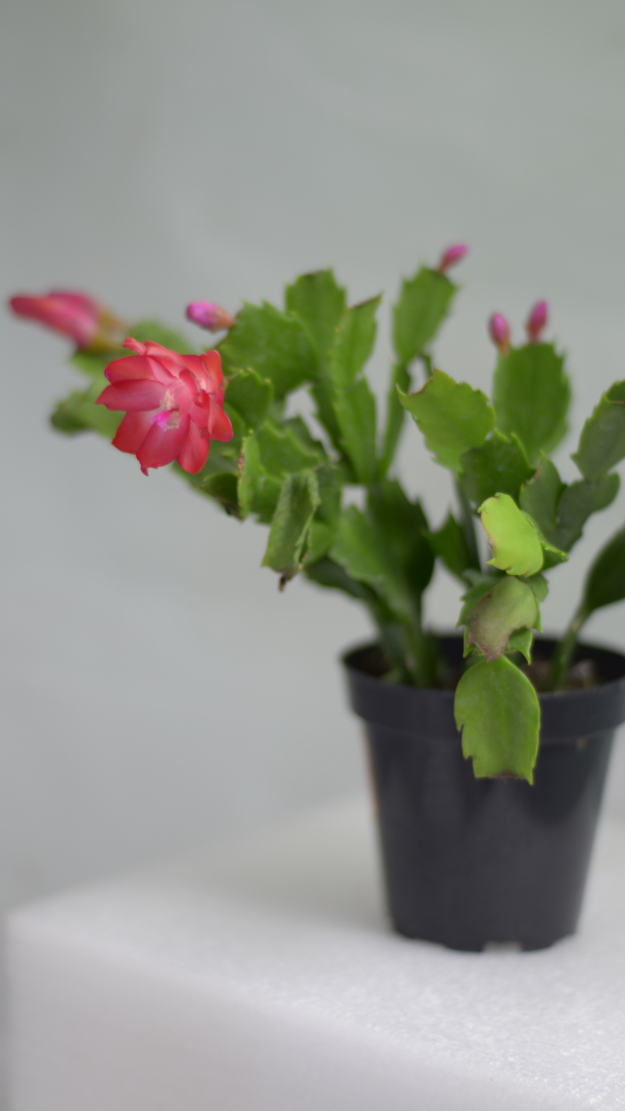
Fertilizing for Healthy Growth and Blooms
Feeding your Thanksgiving Cactus during the growing season can encourage healthy growth and more blooms. Regular fertilization will supply the nutrients the cactus needs to thrive.
Best Fertilizers to Use
Choose a balanced, diluted liquid fertilizer (such as a 20-20-20 formula) to provide essential nutrients. Organic options like fish emulsion or compost tea can also work well. It’s important to dilute the fertilizer to avoid overfeeding the plant, which can lead to burned roots or weak growth.
- Tip: Fertilizers high in phosphorus (the middle number in NPK ratios) can promote better flowering.
Fertilizing Schedule
For best results, fertilize your Thanksgiving Cactus every two weeks during the growing season (spring, summer, and early fall):
- Spring to Summer: Apply fertilizer every two weeks during active growth to support healthy leaves and root development.
- Fall: Continue fertilizing until the plant begins blooming, then stop once the flowers appear.
Post-Bloom Feeding
After the blooming period is over, it’s essential to give the cactus a rest:
- Pause Fertilization: Once the blooms have dropped, stop fertilizing the plant until new growth appears in the spring. This resting period helps prepare the cactus for the next growing season.
If your cactus struggles to bloom, this guide on encouraging blooms in holiday cacti provides additional helpful tips.
Pruning and Propagation of Thanksgiving Cactus
Pruning and propagating the Thanksgiving Cactus is an excellent way to maintain the plant’s health, encourage fuller growth, and even create new plants. Both techniques are simple and can significantly enhance the look and longevity of your cactus.
Pruning for Fuller Growth
Pruning helps promote a bushier, more compact shape for your Thanksgiving Cactus, and it encourages the plant to produce more blooms in the following season. The best time to prune is in the spring, once the plant has started new growth after its dormant period.
- How to Prune: Use sterilized scissors or pruning shears to cut at the joints between the segments of the stems. Focus on trimming any leggy growth or stems that make the plant appear sparse.
- Tip: Each cut you make will encourage branching, leading to a fuller and more vibrant plant.
Propagating from Stem Cuttings
Thanksgiving Cacti are incredibly easy to propagate, and you can use the cuttings from your pruning session to grow new plants. Propagation is best done during the spring or summer when the plant is in its active growing phase.
- Steps for Propagation:
- Take cuttings: Cut off 2-3 segment-long pieces from healthy stems.
- Let the cuttings dry: Place the cuttings in a cool, dry location for 24 hours to allow the cut ends to callous over. This prevents rot when planted.
- Prepare the soil: Use the same well-draining soil mix (peat moss, perlite, and orchid bark) that the parent plant thrives in.
- Plant the cuttings: Insert the cut ends of the segments into the soil, ensuring that they are upright and placed in a bright, indirect light location.
- Water sparingly: Lightly water the cuttings, keeping the soil slightly moist but not wet. After a few weeks, the cuttings should begin to root and establish themselves.
With these simple steps, you can propagate several new Thanksgiving Cacti from a single plant, filling your home with vibrant holiday blooms or sharing them as gifts with friends and family.

How to Encourage Thanksgiving Cactus Blooms
One of the most rewarding aspects of owning a Thanksgiving Cactus is the colorful, vibrant blooms it produces around the holiday season. However, achieving these blooms may require a bit of extra care, especially if the cactus is grown indoors. Here’s how to encourage your plant to bloom each year.
Light and Temperature Adjustments
The Thanksgiving Cactus is sensitive to both light and temperature changes, which trigger its blooming cycle. To encourage flowering, you need to replicate its natural environment’s seasonal shifts:
- Light: Begin by placing the cactus in an area where it can receive at least 12-14 hours of darkness daily, starting around mid-fall. You can either move it to a dark room at night or cover it with a box to mimic these conditions.
- Temperature: Cool temperatures (around 50-55°F) during the same period will help encourage bloom formation. If you can, place the plant outdoors for short periods in the fall (as long as temperatures remain above 40°F). If you keep the plant indoors, try positioning it in a cooler room.
Timing and Patience
The Thanksgiving Cactus typically requires about six weeks of these light and temperature adjustments to start forming buds. Be patient, as some plants may take longer to respond. Once the buds start forming, return the plant to a warmer, brighter spot, but keep it away from direct sunlight.
- Tip: Plants that are slightly pot-bound (meaning the roots are a bit restricted in their pot) often bloom more readily. Don’t be in a hurry to repot your Thanksgiving Cactus too frequently.
Common Problems and Solutions
While the Thanksgiving Cactus is relatively low-maintenance, it can sometimes experience issues. Most problems are related to environmental factors like watering, light, or temperature. Here’s how to identify and fix common problems with your Thanksgiving Cactus.
No Blooms
If your Thanksgiving Cactus isn’t blooming, it could be due to insufficient darkness or cool temperatures during the fall. Additionally, overwatering or keeping the plant in direct sunlight can prevent blooming.
- Solution: Adjust the light and temperature conditions as mentioned in the section above. Ensure your cactus gets the necessary dark and cool environment to trigger flowering.
Yellowing Leaves
Yellow leaves are often a sign of either overwatering or exposure to too much direct sunlight.
- Overwatering: If the leaves are yellow and mushy, reduce watering and check the soil’s drainage. Make sure the pot has proper drainage holes and that the plant isn’t sitting in water.
- Sunburn: If the yellow leaves feel dry and brittle, it’s likely due to too much sun exposure. Move the plant to a location with indirect light and avoid placing it in direct sunlight.
Flower Buds Falling Off
Bud drop is a common issue and often occurs due to sudden changes in environment or inconsistent watering.
- Solution: Keep the cactus in a stable environment during the blooming period. Avoid moving it between rooms, and maintain consistent watering without letting the soil dry out completely. Extreme temperature fluctuations or drafts can also lead to bud drop.
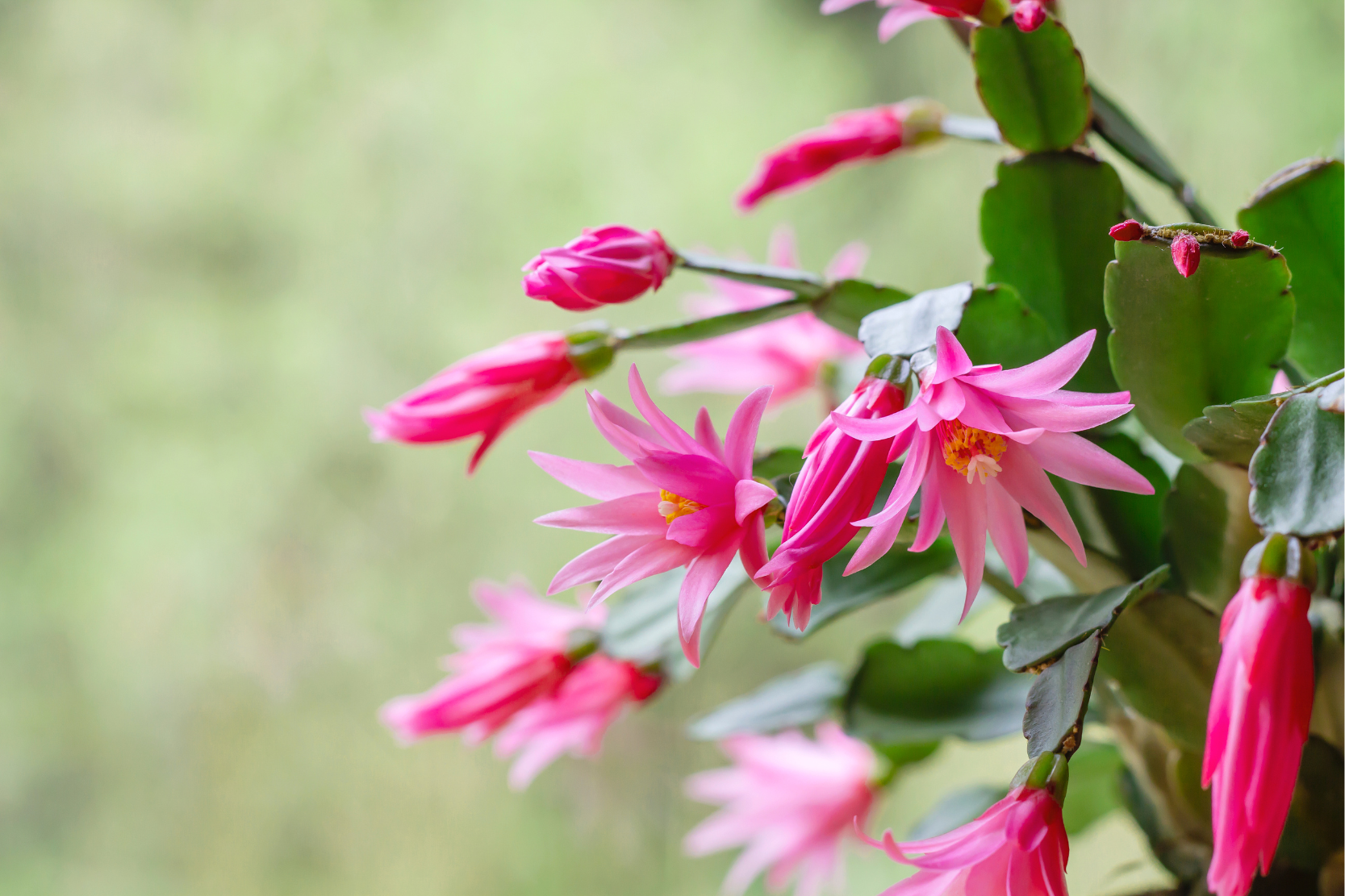
Post-Bloom Care for Thanksgiving Cactus
After the Thanksgiving Cactus finishes blooming, it enters a dormant period. Post-bloom care is essential to ensure the plant remains healthy and is ready to produce more flowers next year.
Reduce Watering
During the dormant phase, reduce your watering frequency. Allow the top few inches of soil to dry out between waterings, as the plant’s growth slows down during this time.
Resting Period
This rest period usually lasts a few months, from winter into early spring. It’s essential to let the plant rest during this time by keeping it in a slightly cooler location and minimizing care.
Preparing for the Next Growing Season
As spring approaches and new growth begins to appear, resume regular watering and start fertilizing again. This will help the cactus recover from its dormancy and prepare for the next cycle of growth and blooming.
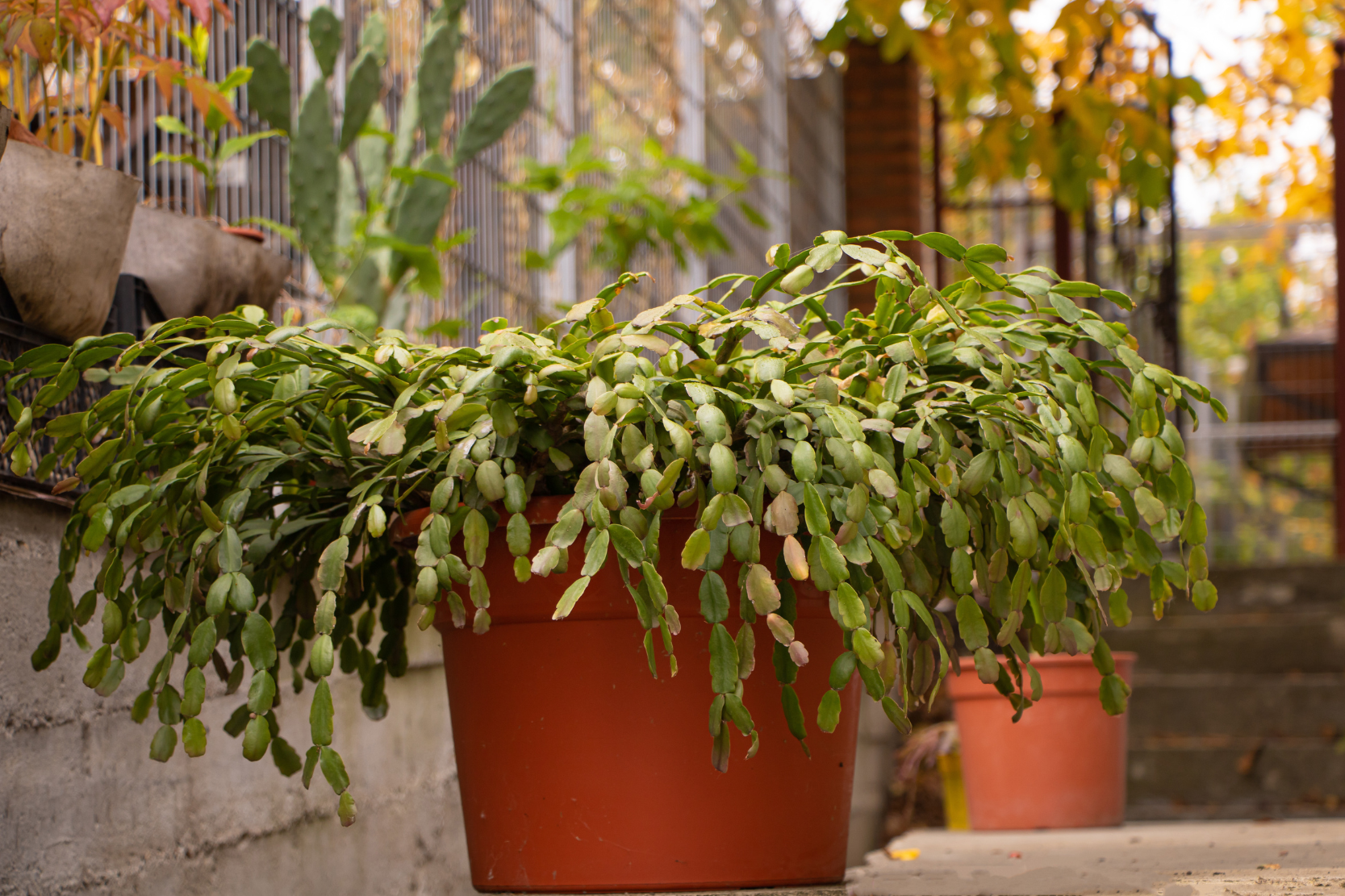
Conclusion
Caring for a Thanksgiving Cactus can be incredibly rewarding, especially when those vibrant holiday blooms brighten your home. By following these simple care tips—adjusting light and water, providing the right soil, and pruning regularly—you’ll have a healthy plant that rewards you with beautiful flowers year after year. With the proper care and attention, your Thanksgiving Cactus will thrive and become a long-lasting part of your indoor plant collection.
Looking for more specialized cactus care tips? Check out our guide 15 Beautiful Cacti To Brighten Your Home And Garden for expert advice on nurturing this seasonal cactus, including how to ensure vibrant blooms year after year.










